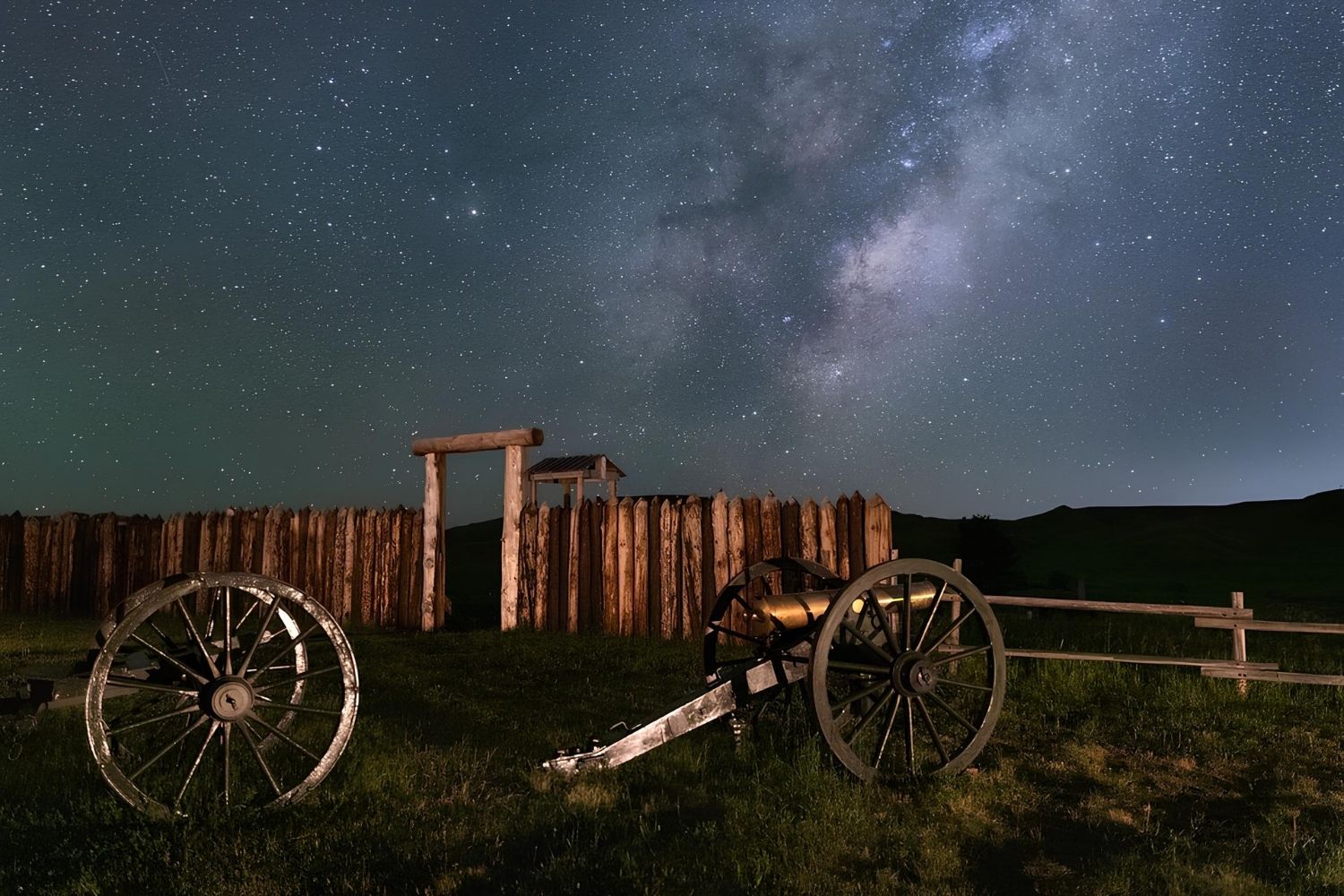Unveil The Secrets Of Fort Phil Kearny’s Indian Wars

Are you ready to step back in time and uncover the rich history of Fort Phil Kearny? Located in northern Wyoming, this historic site played a crucial role during the Indian Wars. Established in 1866, it served as a military post to protect travelers on the Bozeman Trail. The fort witnessed significant battles, including the Fetterman Fight and the Wagon Box Fight, which were pivotal moments in the conflict between the U.S. Army and Native American tribes. Today, visitors can explore the fort's remnants, walk the grounds where soldiers once stood, and learn about the events that shaped the American West. Whether you're a history buff or just curious, Fort Phil Kearny offers a fascinating glimpse into the past.
Unveil the Secrets of Fort Phil Kearny's Indian Wars
Fort Phil Kearny, a historic site in Wyoming, holds many secrets from the Indian Wars. This fort, built in 1866, played a crucial role during the Red Cloud's War. Let's explore the key locations that reveal the fort's hidden stories.
The Fort's Construction
Understanding the fort's construction helps grasp its strategic importance. Built to protect travelers on the Bozeman Trail, it was a symbol of military strength.
- Main Stockade: The heart of the fort, this wooden structure provided defense against attacks. Its high walls and sturdy gates were vital for protection.
- Officer's Quarters: These buildings housed the fort's leaders. Their design reflected the military hierarchy and offered a glimpse into the daily lives of officers.
- Enlisted Men's Barracks: Where soldiers lived, these barracks were simple yet functional. They reveal the harsh conditions soldiers endured.
Key Battles and Skirmishes
Several significant battles occurred near Fort Phil Kearny, each shaping the course of the Indian Wars.
- Fetterman Fight: This battle in 1866 was a devastating defeat for the U.S. Army. Captain Fetterman and his men were lured into an ambush by Lakota, Cheyenne, and Arapaho warriors.
- Wagon Box Fight: In 1867, soldiers defended a corral of wagons against a large Native American force. Their use of new breech-loading rifles played a crucial role in their survival.
- Hayfield Fight: Another 1867 skirmish where soldiers and civilians defended themselves against a Native American attack while gathering hay.
Life at the Fort
Daily life at Fort Phil Kearny was challenging and often dangerous. The fort's inhabitants had to adapt to the harsh environment and constant threat of attack.
- Mess Hall: This communal dining area was where soldiers ate their meals. It was a place of camaraderie and respite from their duties.
- Guardhouse: Used to detain soldiers who broke the rules, the guardhouse was a reminder of the strict discipline maintained at the fort.
- Hospital: Medical care was rudimentary, but the hospital was essential for treating the wounded and sick.
Native American Perspective
The Indian Wars were not just about the soldiers; they deeply affected Native American tribes. Understanding their perspective is crucial.
- Lakota Camps: These temporary settlements near the fort were home to the Lakota people. They provide insight into their way of life and resistance.
- Cheyenne War Parties: The Cheyenne warriors played a significant role in the conflicts. Their strategies and bravery are remembered in these locations.
- Arapaho Allies: Often allied with the Lakota and Cheyenne, the Arapaho contributed to the resistance against the U.S. Army.
The Fort's Legacy
Fort Phil Kearny's legacy extends beyond the Indian Wars. It remains a symbol of the complex history between the U.S. Army and Native American tribes.
- Visitor Center: Today, the visitor center offers exhibits and information about the fort's history. It's a starting point for anyone wanting to learn more.
- Monuments and Markers: Scattered around the site, these markers commemorate key events and figures from the fort's history.
- Reconstructed Buildings: Some original structures have been rebuilt, providing a tangible connection to the past.
Final Thoughts on Fort Phil Kearny
Fort Phil Kearny offers a unique glimpse into the past. This historic site, nestled in Wyoming, tells the story of the Indian Wars and the brave soldiers who defended the fort. Walking through the grounds, you can almost hear the echoes of history. The visitor center provides detailed exhibits, making it easy to understand the significance of this place.
The surrounding landscape is breathtaking, with rolling hills and open skies. It's a perfect spot for history buffs and nature lovers alike. Don't forget to check out the nearby Fetterman Battlefield and Wagon Box Fight sites for a complete experience.
Fort Phil Kearny isn't just a destination; it's a journey through time. Whether you're a history enthusiast or just looking for a unique adventure, this site won't disappoint. Pack your bags and step back in time at Fort Phil Kearny.

